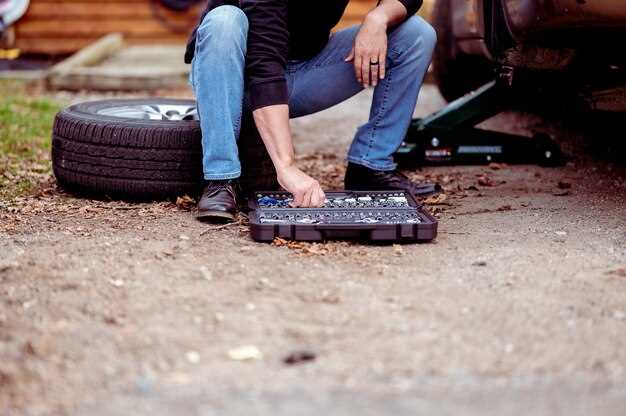
Mastering the art of rear braking techniques is essential for any performance driver looking to enhance their track driving skills. The ability to effectively utilize the rear brakes can significantly impact your cornering speed, stability, and overall vehicle control during high-performance driving scenarios. Understanding the nuances of rear braking can provide drivers with a competitive edge on the track.
In this article, we will delve into the fundamental principles of rear braking, exploring its benefits, the various techniques involved, and practical applications on the track. We’ll discuss how rear braking works in conjunction with weight transfer, and the effects it has on tire grip and vehicle dynamics. By mastering these techniques, drivers can better navigate tight corners, reduce lap times, and improve overall handling.
The discussion will also cover the importance of practice and consistency, as well as tips for integrating rear brake techniques into your driving repertoire. Whether you are a novice or an experienced racer, understanding how to effectively engage the rear brakes can elevate your track driving experience and push your limits. Join us as we explore these vital techniques that could redefine your approach to speed and control on the racetrack.
Understanding Weight Transfer During Braking
Weight transfer occurs when a vehicle experiences forces that shift its weight from one part of the car to another. During braking, this transfer is crucial for understanding how a car reacts and can significantly impact handling and traction. When the brakes are applied, inertia causes the vehicle’s weight to move forward, increasing load on the front tires and reducing it on the rear. This can lead to altered grip levels on both axles.
The amount of weight transfer depends on several factors, including the speed of the vehicle, the deceleration rate, and the characteristics of the suspension system. A more aggressive braking force leads to more pronounced weight transfer. As the front tires receive additional load, their grip increases, providing better stopping power. However, excessive forward weight transfer can lead to a condition known as ‘understeer,’ where the car fails to turn as expected due to diminished rear traction.
Conversely, if the rear tires lose grip due to its reduced load, the risk of ‘oversteer’ increases, potentially causing the vehicle to rotate unexpectedly. Thus, understanding the dynamics of weight transfer is essential for maintaining control during braking, especially in track driving scenarios where precision and stability are critical.
Drivers can manage weight transfer by adjusting their braking technique. Smooth, progressive application of brakes helps distribute weight effectively, allowing both front and rear tires to maintain optimal grip. Techniques such as trail braking–where the driver gradually releases the brake while entering a turn–can also be employed to utilize weight transfer to enhance cornering performance. Knowing how to manipulate weight transfer can lead to improved lap times and a more controlled driving experience on track.
Proper Trail Braking for Optimal Cornering

Trail braking is a vital technique in track driving, allowing drivers to maximize cornering speed by effectively managing weight transfer and tire grip. This method involves gradually releasing the brake while steering into a corner, maintaining braking force until the optimal moment before the apex. By shifting weight towards the front tires, drivers enhance their steering response and increase front-end grip, which is crucial for precision cornering.
The execution of trail braking begins by approaching the corner under braking, ideally utilizing the rear brake techniques discussed previously. As you near the corner entry, begin to progressively ease off the brakes while simultaneously turning the steering wheel. This action helps to settle the car and optimally distribute weight across the tires, promoting better traction and stability.
Maintaining a balanced throttle throughout the process is essential. As you trail off the brakes, gradually introduce acceleration to help rotate the car and prepare for the exit. The balance between braking and throttle input must be finely tuned; too much acceleration can lead to understeer, while insufficient throttle can cause oversteer. The goal is to maintain a smooth transition that allows for a seamless entry into the apex.
Practice is key to mastering trail braking. Drivers should spend time understanding their car’s dynamics and how braking forces affect handling characteristics. Utilizing track days to experiment with different braking points and techniques will provide valuable feedback and improve overall driving performance. Watching your braking patterns can reveal insights into how to optimize your cornering efficiency.
Lastly, remember that trail braking requires finesse rather than aggression. Being too abrupt with the brakes or steering can destabilize the car. Focus on smooth inputs and gradual adjustments to keep the vehicle balanced and maintain control throughout the cornering process.
Adjusting Brake Bias for Enhanced Stability

Brake bias refers to the distribution of braking force between the front and rear wheels of a vehicle. Properly adjusting brake bias is crucial for achieving optimal stability during track driving. An imbalance can lead to increased understeer or oversteer, compromising control and performance.
To enhance stability, start by understanding the vehicle dynamics. Generally, a front-biased setup offers better stability during braking, particularly when entering corners. Conversely, a rearward bias can improve rotation, but may also increase the risk of rear-wheel lockup, resulting in oversteer.
To adjust brake bias effectively, you can utilize adjustable proportioning valves or balance kits. These allow for fine-tuning the front-to-rear brake pressure. Incremental adjustments, typically ranging from 5% to 10%, are advisable. Monitor the vehicle’s behavior during testing to gauge the effects of each adjustment, aiming for a balance that provides confidence and control.
Furthermore, the type of tires and their grip levels should also be considered. Softer tires may necessitate a bit more rear bias to enhance cornering stability, while harder tires might require a more neutral setup. Track conditions, such as surface grip and temperature, should also inform your adjustments.
Ultimately, the goal of adjusting brake bias is to achieve predictable handling during braking and cornering. Thorough practice and experimentation will lead to a more responsive and stable braking system, allowing for improved lap times and driving enjoyment on the track.

